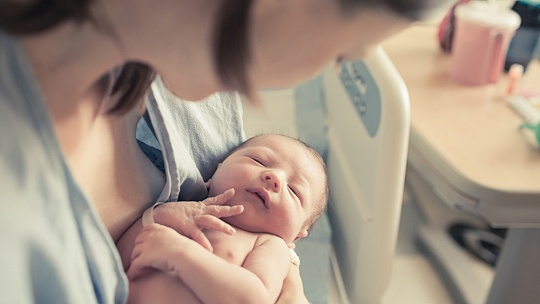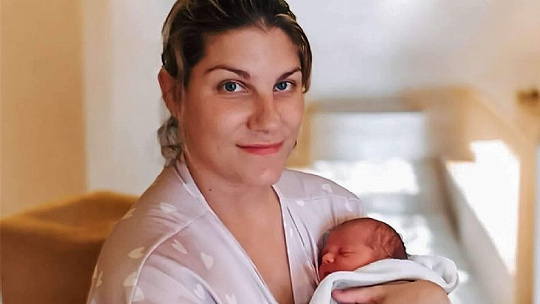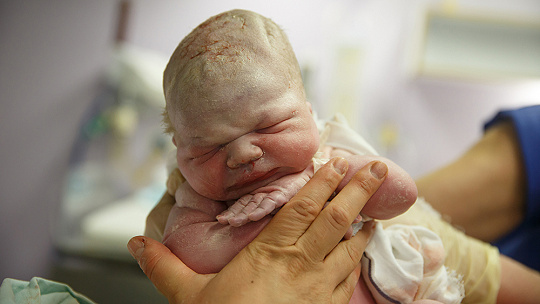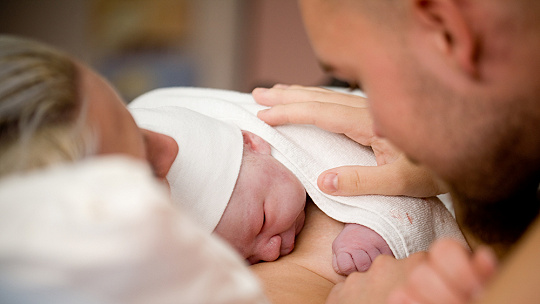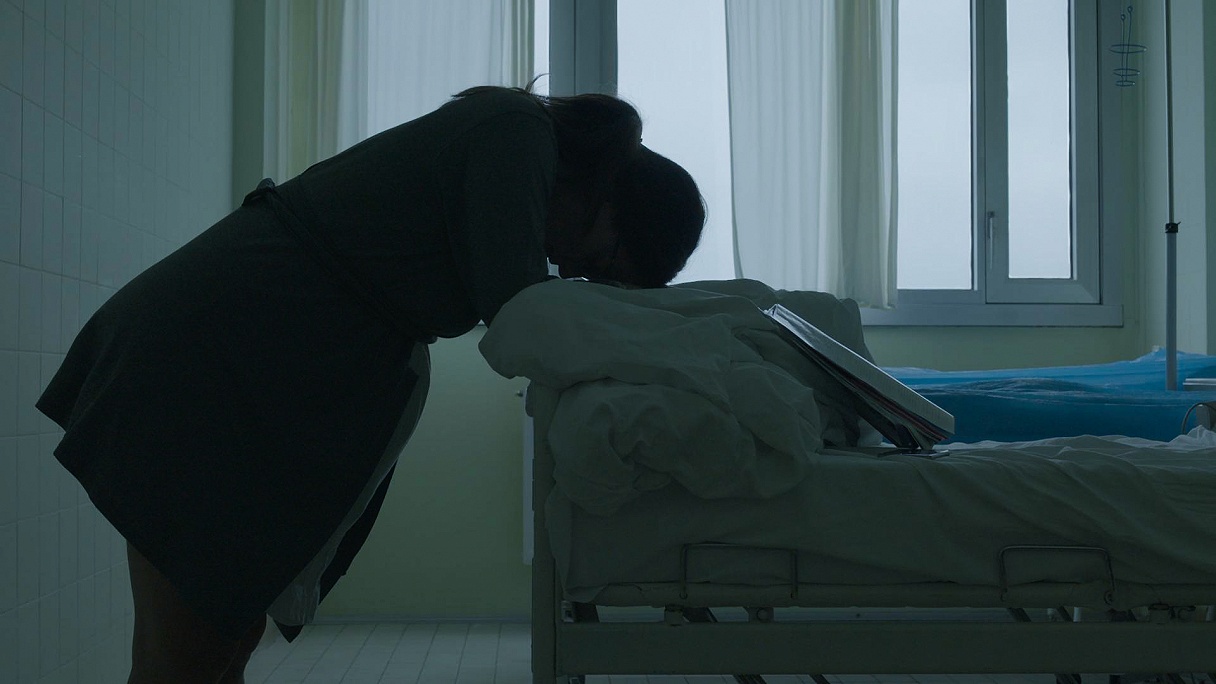
Voľba polohy pri pôrode je dnes u nás skôr výnimkou.
Foto: Medzi namiPozrite si ukážku z filmu Zuzany Límovej Medzi nami, ako vyzerá drvivá väčšina pôrodov v našich nemocniciach.
Squatting or Kneeling During Childbirth is Safer Both for the Woman and the Child, a Midwife Says from Selina Becker on Vimeo.
V našich pôrodniciach sa bohužiaľ tradicionalisticky používa, respektíve je ženám nanútená, poloha v ľahu na chrbte s rozkročenými nohami. Mnohí lekári − pôrodníci ani v inej polohe pôrod odvádzať nevedia alebo odmietajú. Takzvaná gynekologická poloha pritom odporuje anatómii a za najmenej vhodnú ju považuje aj Svetová zdravotnícka organizácia.Pôrodný kanál má tvar písmena J, čo znamená, že dieťa postupuje najskôr dolu, ale potom hore cez panvu. V ľahu na chrbte sú pôrodné sily − kontrakcie maternice, svaly panvového dna, ako aj brušný lis – čiastočne alebo úplne eliminované a žena musí vynaložiť veľké úsilie na to, aby dieťa porodila proti gravitácii.
Počas pôrodu je preto dôležitá poloha, ktorú si žena sama inštinktívne volí tak, aby sa ona a jej dieťa cítili čo najlepšie. Môže byť v podrepe, v sede alebo v kľaku. Je ťažké dopredu plánovať, v akej pozícii bude žena rodiť. Podstatné je, aby mala viacero možností a sama si vybrala polohu pre ňu najvhodnejšiu. Vertikálne (zvislé) polohy znižujú riziko pôrodných zranení či komplikácií a sú menej stresujúce pre matku aj dieťa.
V dnešnej dobe je pre ženu rodiacu v slovenských pôrodniciach veľmi ťažké dosiahnuť slobodný výber pôrodnej polohy, akceptáciu pôrodného plánu či intimitu. Otázkou ostáva, ako sa k týmto požiadavkám žien postavia kompetentní, a či budú ochotní meniť zaužívané stereotypy.
Mgr. Iveta Lazorová, dipl. p. a., prezidentka Slovenskej komory sestier a pôrodných asistentiek, www.sksapa.sk
Film Medzi nami je dostupný už aj na internete. Pozrieť online aj stiahnuť si ho môžete TU.
Squatting or Kneeling During Childbirth is Safer Both for the Woman and the Child, a Midwife
How would our babies be born if best practice medicine were followed? Every day during the International Week for Respecting Childbirth we bring you an excerpt from our documentary Before I Met You, accompanied by expert commentary. Iveta Lazorová, the President of the Slovak Chamber of Nurses and Midwives, writes about why women should choose their birth position.In our maternity hospitals, unfortunately, the lying position on the back with legs spread is traditionally used or, better say, imposed on women. Many doctors − obstetricians are not able to assist birth in any other position or refuse to do it. The so called gynaecological position, though, works against human anatomy, and the World Health Organization also considers it the least appropriate.
The birth canal has the shape of the letter J, which means that the child proceeds first down and then upwards through the pelvis. In the lying on the back position, the labouring force − contractions of the uterus, pelvic floor muscles, and abdominal press − are partially or completely eliminated and the woman has to make a lot of effort to give birth to the baby against gravity forces.
During birth, the position that the woman instinctively chooses to make her and her child feel at their best is therefore important. It may be a squatting, sitting, or kneeling position. It is difficult to plan ahead which position the woman will use for giving birth. What matters is her having several options and she choosing herself the position that best suits her. Vertical positions reduce the risk of birth injuries and complications and are less stressful for the mother and the child.
Nowadays, it is very difficult for a woman giving birth in a Slovak maternity ward to be able to freely choose a birth position, have birth plan accepted, and intimacy provided. The question remains how the competent people will respond to these demands of women and whether they will be willing to change stereotypes.
Mgr. Iveta Lazorová, dipl. p. a., the President of the Slovak Chamber of Nurses and Midwives, www.sksapa.sk

